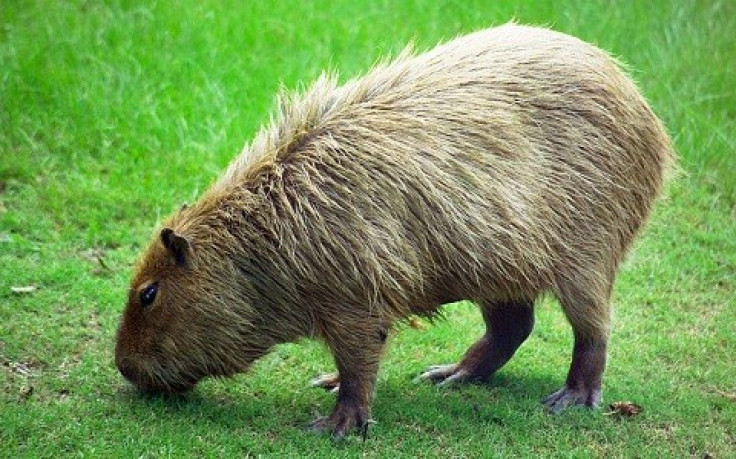Giant Rodent, Weighing 100 Pounds, Spotted in California

A giant South American rodent weighing at least 100 pounds has been spotted at a California waste-water treatment facility, but has since disappeared in the brush, a wildlife official said on Tuesday.
The animal was identified as a capybara, which is the world's largest rodent, and it feeds on vegetation.
"If you think a giant guinea pig is cute, then you probably would like it," said Todd Tognazzini, a lieutenant with the California Department of Fish and Game.
Believed to Be Escaped Pet
The capybara is believed to be an escaped pet, Tognazzini said. It was last seen about two weeks ago at a waste-water treatment facility in Paso Robles, a city in a wine growing region about 175 miles northwest of Los Angeles, he said.
An employee at the plant took photos of the animal, which is estimated to stand 2 feet tall, as it crawled out of a pond.
The capybara's South American habitat ranges from Panama to northeas Argentina, east of the Andes, according to a description on the website of the San Francisco Zoo.
The animal spotted in Paso Robles was found near the Salinas River and a hot spring, a watery habitat that in some ways resembles the regions where capybaras live in South America, Tognazzini said.
A capybara can hold its breath under water for up to five minutes, and the animal spends much of its roughly four-year lifespan near the water, he said.
The latest spotting of the capybara comes two years after another sighting of the animal a mile away.
A man was feeding his horses alfalfa hay when a strange animal approached and scared off the horses to take the feed, Tognazzini said. When the animal chased after the man's dog, he shot at it with a shotgun and scared it off, he said.
Rodent Weighs 100-120 Pounds
An examination of the footprints later revealed it was a capybara weighing between 100 pounds and 120 pounds, he said.
Officials believe that was the same animal last seen at the waste-water treatment facility in Paso Robles, and that there are no other capybaras in the area.
In California, the capybara cannot be held as a pet without a special permit, which is normally given only to zoos or individuals who exhibit wild animals and know how to care for them, Tognazzini said.
But that does not mean that some individuals do not keep them as pets -- albeit illegally.
"The Internet is fraught with examples of people scratching them on the belly and thinking they're cute and making pets of them," Tognazzini said.
The California Department of Fish and Game has no immediate plans to capture the capybara seen in Paso Robles, and officials do not view the animal as dangerous.
(Reporting by Alex Dobuzinskis: Editing by Dan Whitcomb.)
© Copyright Thomson Reuters 2024. All rights reserved.











